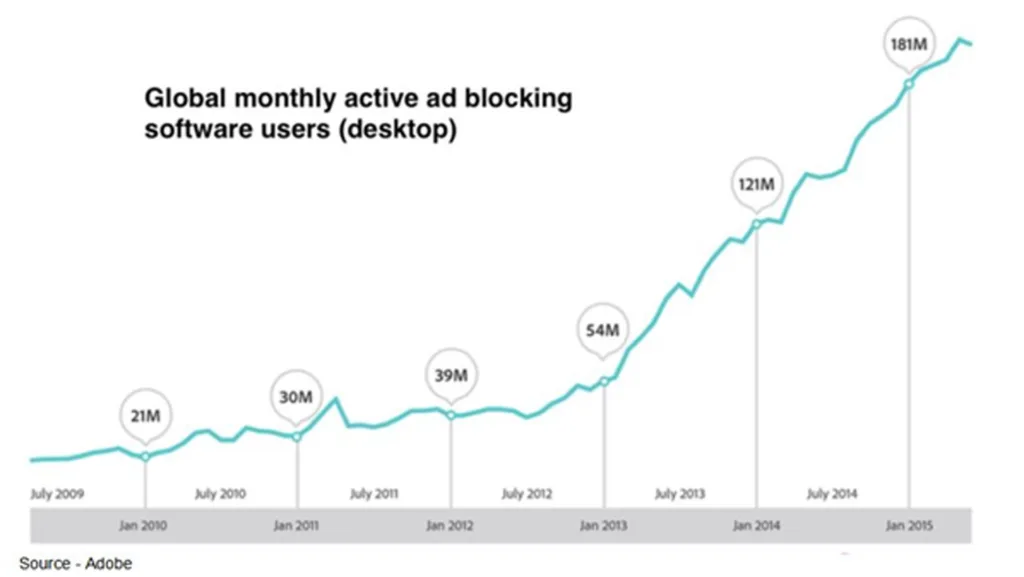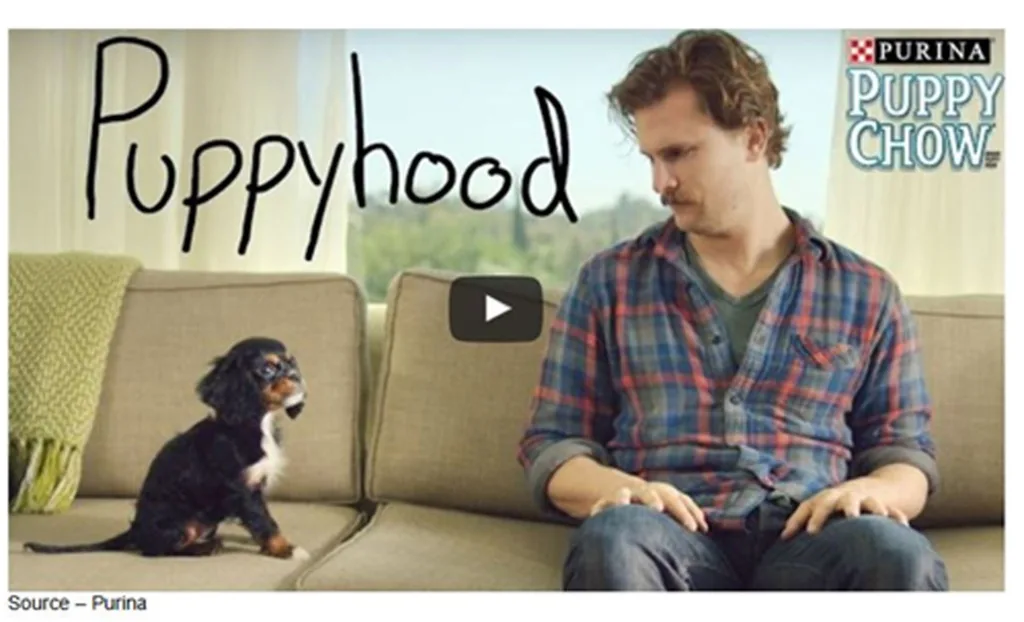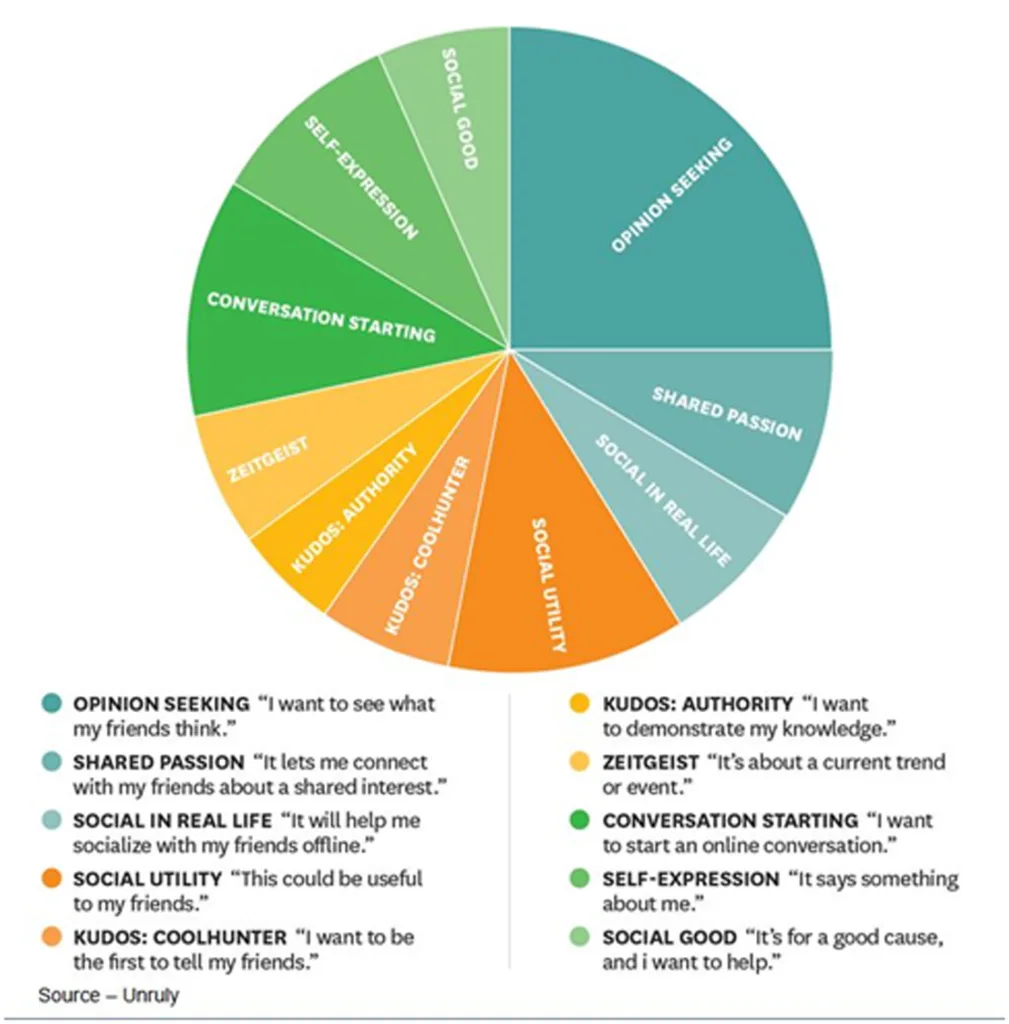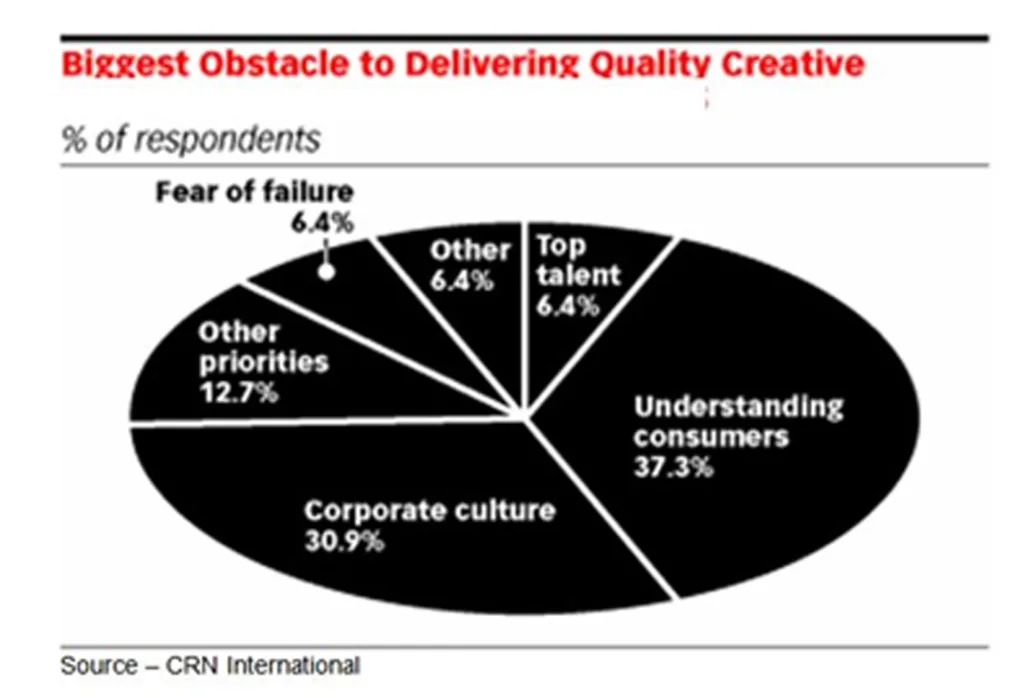
Not long ago, “The New York Times” ran a rant that social media was having a negative effect on quality journalism. When Dan Gilmore, former tech writer for the “San Jose Mercury News”, first advanced the idea of citizen journalism as the web and social media was beginning to sprout. It sounded great at the time. Some of it is ok-to-good and well, occasionally great. Most is simply mutilating, killing electrons appealing to the lowest common denominator for followers, likes and numbers. The same can be said about most marketing messages. Both trivialize substance, avoid creative risks and bask in the quantity rather than the quality of people they reach. People – young and old – know and appreciate intelligent content (and the surrounding ads). I admire the news anchor that walked off the set saying, “I’ve had enough of the Kardashians!” Most journalists would agree. This year, an estimated $21.8B worth of advertising will be blocked.
 Blockage – Ad blocking is growing not because people don’t like ads but because they don’t like bad and ultra-repetitive ads. Of course, ad provisioners aren’t above shoving them in every area possible … just in case.
Blockage – Ad blocking is growing not because people don’t like ads but because they don’t like bad and ultra-repetitive ads. Of course, ad provisioners aren’t above shoving them in every area possible … just in case.
Serves them right, you say? Bullpucky! In addition to blocking the garbage, there will be good, useful, informative advertising that will be swept aside. That’s gonna’ hurt and will cost companies sales/revenue. Ad blockers aren’t intelligent. They simply block anything that looks, smells, tastes like an ad. Yes, I know, people like to quote Stewart Brand, founder of Whole Earth Catalog, who said, “Information Wants To Be Free,” in 1984. But that was only part of his comprehensive statement which he later shortened to, “Information Wants To Be Free. Information also wants to be expensive … That tension will not go away.” To ensure it is worth the expense, journalists and marketing/communications folks have to make their stuff valuable to the recipient. The ads are there because that’s what underwrote the cost of creating the content for me! If it weren’t so easy to ignore them or dump most of the stuff that passes for ads, I might block them too … most are “less than stellar.” Those that are good, I spend time with. For as long as I can remember, marketing has held that they are reflecting, playing to the larger social consciousness. Gawd, they have a low opinion of us. We knew they’re our host … they repeat the ad over and over and … Kids who have never known anything but an online life don’t have any built-in tolerance. They expect everything to be available and free. A shared movie here, a cleansed TV show/series there, shared social media videos, all the blocked ad news/entertainment you could possibly want. Consumers aren’t opposed to the ads – especially visual – it’s the quality, quantity and viewing device that make the difference.
 Repetition, Volume – Google, Facebook and ad provisioners aren’t certain exactly what the breaking point is for people before they decide enough is enough; but they’re constantly testing to find the point of no return. Screen size and complexity of the message also have a strong effect on acceptability.
Repetition, Volume – Google, Facebook and ad provisioners aren’t certain exactly what the breaking point is for people before they decide enough is enough; but they’re constantly testing to find the point of no return. Screen size and complexity of the message also have a strong effect on acceptability.
According to eMarketer, people watch an average of one hour, 15 minutes of digital video every day, including the ads. However, they are turned off by:
- less than transparent edutainment
- native content(ads disguised as editorial)
- pre-roll video ads (ads running before the video)
- retargeted ads
- less than personalized content.
Ampere Analysis noted that Facebook was on track to serve up two trillion videos, compared to YouTube’s three trillion. Instagram and Snapchat are also making good inroads with branded videos. Looking to raise their profits, they’re all testing promoted video ads in search of results. In publications, there used to be a rule of thumb that said 60 percent content, 40 percent ads. In TV, it was cramming three minutes of ads in every quarter hour. Yeah, we know with their income off – sharply – they’re adding a little on each side. Online, they have a helluva’ time figuring out where the saturation point is … just the dollars. There is an emphasis on visual assets because done right, they help brands tell their stories. To reach audiences across devices – TV, computer, tablet, smartphone – seven in 10 advertisers turned to multichannel campaigns. Of course, the holy grail for any marketing person is for his/her video to go viral.
 Good Ads – Some of the most popular ads on the web are those that are entertaining and tell a story. Purina and Old Spice both achieved high volumes of pass along viewership without beating people over the head with their messages. It took work but it paid off.
Good Ads – Some of the most popular ads on the web are those that are entertaining and tell a story. Purina and Old Spice both achieved high volumes of pass along viewership without beating people over the head with their messages. It took work but it paid off.
Unruly, a marketing technology company analyzed more than 430B video views and 100,000 consumer data points to determine the most powerful enablers that drove viewers to share content, rather than simply find it by browsing. The company’s executives noted that the psychological response and social motivation would work across all product categories, taking into consideration the target audience and consumer appeal. “Obviously; children, cats and puppy love have a strong appeal,” a senior executive said. “But the best videos elicit a broad range of motivations that encourage WOM (word of mouth) sharing for all products.”
 Going Viral – Good marketing messages that educate, inform and assist consumers are more likely to be passed along and shared. They work much better than in-your-face ads.
Going Viral – Good marketing messages that educate, inform and assist consumers are more likely to be passed along and shared. They work much better than in-your-face ads.
Opinion seeking is a major motivator for social sharing. While people think humor drives sharing, it is difficult to pin down precisely because humor is culturally sensitive. Eighteen percent of online users share videos at least once a week, 9 percent daily. These super sharers account for more than four-fifths of the total content shared. An increasing volume of the sharing is rapidly shifting from PCs to mobile devices, specifically smartphones. While they are the most effective content type, videos were also ranked as the most difficult to effectively create, according to research conducted by Ascend2. Most respondents said there was considerable disorganization of the content with various teams and with team memb
ers that have competing priorities and goals. Although they’re unable to agree, marketing professionals say they’re happy with their own ad creative work.
 Ads They Deserve – While it is easy to blame the creative team for ads that are ineffective, that’s often far from the truth. In many instances, the best ideas are not presented because the team knows management won’t approve them or they are presented and quickly shot down for “a better, less subtle” ad.
Ads They Deserve – While it is easy to blame the creative team for ads that are ineffective, that’s often far from the truth. In many instances, the best ideas are not presented because the team knows management won’t approve them or they are presented and quickly shot down for “a better, less subtle” ad.
In spite of the volume of data that is being gathered from online users, marketing feels their biggest obstacle to delivering quality creative is understanding the customer and being able to deliver the right content in a timely manner. Marketing folks said their major objective was capturing the consumer’s attention and creating a positive user experience. That’s just a little difficult when they don’t really understand and don’t listen to the customer first. Of course, the second major obstacle to producing and delivering good video ad content is corporate culture and the focus on the technology, features of the product rather than finding out exactly what the consumer sees in the product, why he/she buys it and the benefits he/she derive from owning the product/service. So perhaps the problem isn’t the consumers’ inability to grasp the message. Instead, it’s the organization’s ability to deliver content that really appeals to the individual and solves real, not preconceived, problems. You know … meets consumers’ wants/needs. It’s not really a necessity to listen to them first. After all ad blockers are readily available.  As Nicky said, “There’s two kinds of people in this world. There’s hammers and there’s nails. You decide which one you want to be.” Getting out in the field and listening to customers is … optional.
As Nicky said, “There’s two kinds of people in this world. There’s hammers and there’s nails. You decide which one you want to be.” Getting out in the field and listening to customers is … optional.
# # #